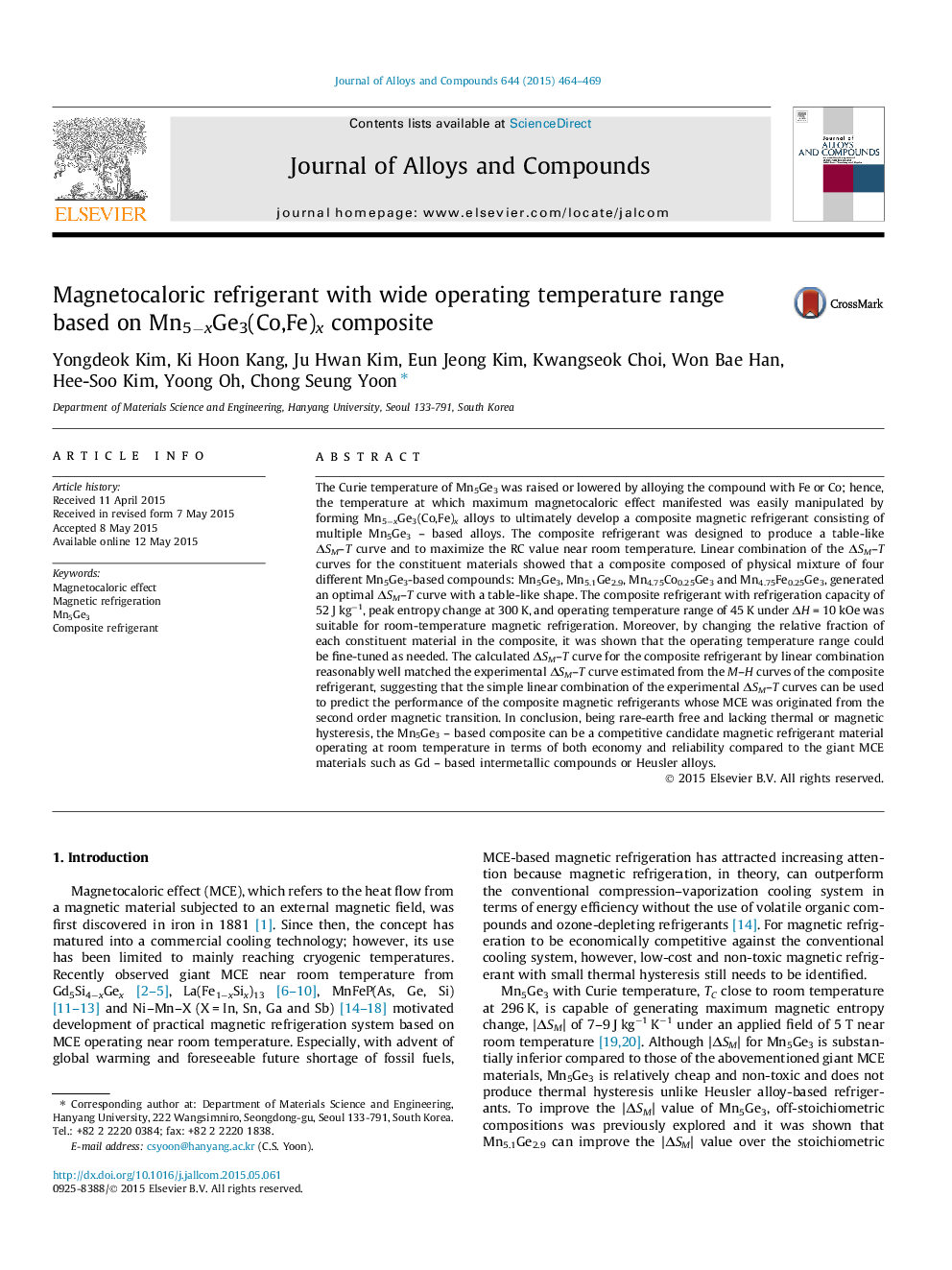| Article ID | Journal | Published Year | Pages | File Type |
|---|---|---|---|---|
| 7998579 | Journal of Alloys and Compounds | 2015 | 6 Pages |
Abstract
The Curie temperature of Mn5Ge3 was raised or lowered by alloying the compound with Fe or Co; hence, the temperature at which maximum magnetocaloric effect manifested was easily manipulated by forming Mn5âxGe3(Co,Fe)x alloys to ultimately develop a composite magnetic refrigerant consisting of multiple Mn5Ge3 - based alloys. The composite refrigerant was designed to produce a table-like ÎSM-T curve and to maximize the RC value near room temperature. Linear combination of the ÎSM-T curves for the constituent materials showed that a composite composed of physical mixture of four different Mn5Ge3-based compounds: Mn5Ge3, Mn5.1Ge2.9, Mn4.75Co0.25Ge3 and Mn4.75Fe0.25Ge3, generated an optimal ÎSM-T curve with a table-like shape. The composite refrigerant with refrigeration capacity of 52Â JÂ kgâ1, peak entropy change at 300Â K, and operating temperature range of 45Â K under ÎHÂ =Â 10Â kOe was suitable for room-temperature magnetic refrigeration. Moreover, by changing the relative fraction of each constituent material in the composite, it was shown that the operating temperature range could be fine-tuned as needed. The calculated ÎSM-T curve for the composite refrigerant by linear combination reasonably well matched the experimental ÎSM-T curve estimated from the M-H curves of the composite refrigerant, suggesting that the simple linear combination of the experimental ÎSM-T curves can be used to predict the performance of the composite magnetic refrigerants whose MCE was originated from the second order magnetic transition. In conclusion, being rare-earth free and lacking thermal or magnetic hysteresis, the Mn5Ge3 - based composite can be a competitive candidate magnetic refrigerant material operating at room temperature in terms of both economy and reliability compared to the giant MCE materials such as Gd - based intermetallic compounds or Heusler alloys.
Related Topics
Physical Sciences and Engineering
Materials Science
Metals and Alloys
Authors
Yongdeok Kim, Ki Hoon Kang, Ju Hwan Kim, Eun Jeong Kim, Kwangseok Choi, Won Bae Han, Hee-Soo Kim, Yoong Oh, Chong Seung Yoon,
